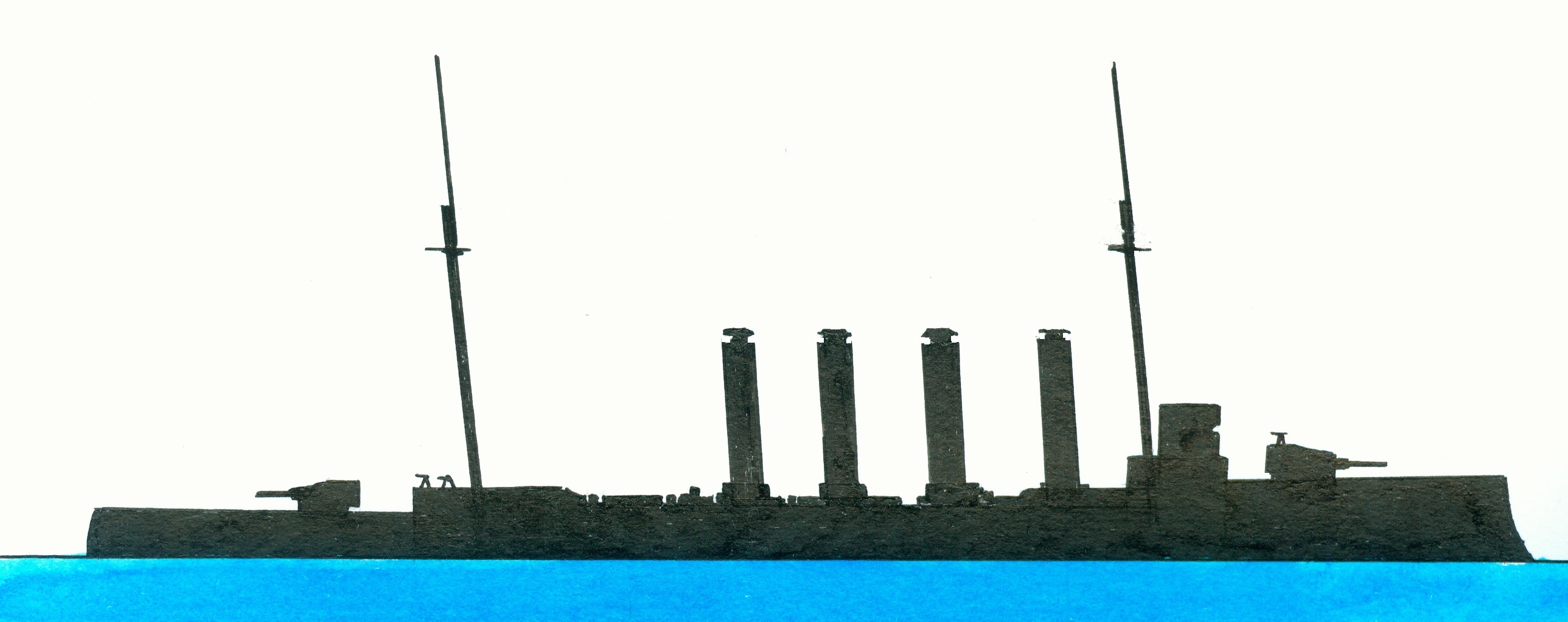Devonshire-class
Duke of Edinburgh-class
Warrior-class
Laid down at the |Thames Ironworks and Shipbuilding Company, Blackwall, London, England on 3 June 1903, launched on 8 November 1904, commissioned on 17 March 1906 and sunk during the Battle of Jutland against the German fleet on 31 May 1916. With numerous hits scored by German warships like the battleships Thüringen (1), Nassau (2), Ostfriesland (3) and Friedrich der Grosse (4) sank she within 15 minutes with her entire crew of 857 men. Building cost 1.193.414 pound sterling. Of the Duke of Edinburg-class consisting of the Duke of Edinburgh and the Black Prince, designed by director of naval construction sir Philip Watts (5), preceded by the Devonshire-class and succeeded by the Warrior-class. Built under the 1902-1903 Naval Estimates.
German Helgoland-class dreadnoughts
German Nassau-class battleships
German battleship Friedrich der Gross
General technical specifications. With a displacement of 12.790 tons/12.590 long tons-13.770 tons/13.500 long tons (design) were the dimensions 146,3 (between perpendiculars)|-154,08 (over all) x 222,4 x 9,1 (fore)-8,4 (aft) x 9,1 (metacentric height) metres or 480-506.6 x 73.6 x 26.6-27.6 x 4.2 feet. The 2 shafts 2-4 cylinder vertical triple expansion steam engines and 26 boilers supplied 23.000 ihp allowing a speed of 23 knots or with a speed of 10 knots a range of 8.130 nautical miles. The crew numbered 769 men. The armament consisted of 6x1-23,4cm/9.2” breech loading Mk X guns, 10x1-15,2cm/6” breech loading Mk XI guns, 20x1-4,7cm/3pd quick firing Vickers guns and 3-45cm/18” submerged torpedo tubes, for which 18 torpedoes were carried with them. The Krupp cemented armour consisted of a 7,6cm3” (end)-10,2cm/4” (between central citadel and bow)- 15,2cm/6” over a length of 79,2m/260 feet of the hull amidships with a height of 4,42metres/14.6”feet above and 1,47 metres/4.10 feet below the waterline. The citadel was protected by 6” thick transverse bulkheads and further more was a 1,9cm/0.75” thick deck although the steering gear and engine cylinders were better protected with 3,8cm/1.5”and5,1cm/2”. The gun turrets, barbettes and conning tower were protected by respectively 5.5” (sides)-2” (roof)-7.5” (faces, 6” and 25,4cm/10” (sides).
Notes
1. Of the Helgoland-class consisting of the Helgoland, Ostfriesland, Thüringen and Oldenburg. The armament consisted of 6x2-30,5cm/12.0” L/50 quick firing guns, 14-15cm/5.9” L/45 quick firing guns, 14-8,8cm/3.5” L/45 quick firing guns (after 1914 were 2 of these guns replaced by 2-8,8cm Flag guns and between 1916-1916 were the another 1 guns removed) and 6-50cm/20” submerged torpedo tubes (1x bow, 1x stern, 2 each broadside).
2. Of the Nassau-class consisting of the Nassau. Posen, Rheinland and Westfalen. The armament consisted of 6x2-28cm/11” L/45 guns, 12-15cm/5.9” quick firing L/45 guns, 16-8,8cm/3.5” quick firing L/45 guns and 6-45cm/18” torpedo tubes.
3. Of the Helgoland-class consisting of the Helgoland, Ostfriesland, Thüringen and Oldenburg. The armament consisted of 6x2-30,5cm/12.0” L/50 quick firing guns, 14-15cm/5.9” L/45 quick firing guns, 14-8,8cm/3.5” L/45 quick firing guns (after 1914 were 2 of these guns replaced by 2-8,8cm Flag guns and between 1916-1916 were the another 1 guns removed) and 6-50cm/20” submerged torpedo tubes (1x bow, 1x stern, 2 each broadside).
4. Of the Kaiser-class. The armament consisted of 5x2-30,5cm/12”guns, 14x1-15cm.5.9” guns, 8-8,8cm.3.5” guns and 5-50cm/19.7” submerged torpedo tubes.
5. Philip Watts (30 May 1846 Depford, Kent, England-15 March 1926, Chelsea, London, England).






